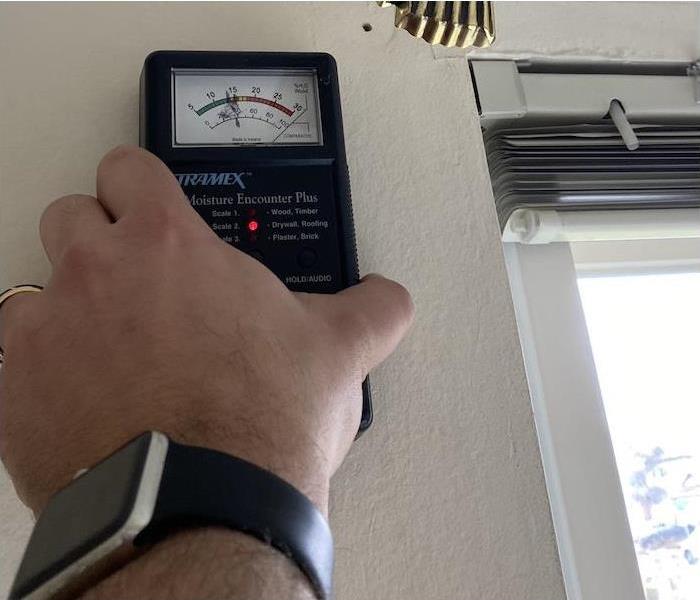Water Damage Repair in Seal Beach Properties Needs Professionals
4/13/2023 (Permalink)
How SERVPRO Technicians Speed Up Drying After Water Damage to Seal Beach Properties?
Water damage to your Seal Beach property, whether due to burst pipes, ceiling leaks, or plumbing issues, can have disastrous consequences if not addressed promptly. The longer the water penetrates various surfaces, the more extensive damage it can cause.
Hence, the primary objective of SERVPRO technicians during the restoration of water damage to your Seal Beach properties is to dry the structure as quickly as possible. Our Institute of Inspection, Cleaning, and Restoration Certification (IICRC) certified technicians use various strategies to create conditions that favor rapid evaporation. The goal of these strategies is to-.
- Remove the excess moisture from the air
- Increase the airflow across the wet surface
- Increase the temperature of the drying air
Combining these three factors shift the natural equilibrium in favor of the drying process.
Removing Excess Moisture from the Air
SERVPRO technicians use dehumidifiers to remove excess moisture from the air in your water-damaged Seal Beach home, which results in a reduction of humidity ratio. As the dehumidifiers remove water vapor from the air, the rate of evaporation increases as more moisture can now leave the wet material and enter the air. The SERVPRO technicians ensure that the amount of moisture removed by dehumidification equals or exceeds the moisture added by the evaporation process. The technicians strategically place the dehumidifiers throughout the wet structure so that the conditions always favor drying.
SERVPRO technicians use different types of heavy-duty dehumidifying systems, including:
- Refrigerant Dehumidifiers: Perhaps the most common type of dehumidifiers used in the restoration industry, they work similarly to a refrigerator. A refrigerant is circulated through coils in the equipment, which cools them down. When moist air passes over them, the water vapor condenses and is collected in collection tanks. The equipment works best within the temperature range of 700-900F.
- Low Grain Refrigerant (LGR) Dehumidifiers: Although they work similar to refrigerant dehumidifiers, they can dry space to a lower humidity ratio. An LGR manages this by re-cooling the air before moving across evaporator coils.
- Desiccant Dehumidifiers: These pieces of equipment use chemicals called desiccants to absorb moisture from the air. Desiccants can reduce the humidity ratio much lower than equipment based on refrigerants.
Increasing Airflow Across Wet Surface
SERVPRO technicians use air-moving equipment to blow dehumidified air across the wet surfaces. As the moisture evaporates from the surfaces, the layer of air closer to the surface becomes saturated with water vapor, slowing down the evaporation.
Air movers can replace this stagnant layer of air with drier and warmer air from the dehumidifiers and increase the drying rate.
SERVPRO technicians use two types of air movers during water damage restoration projects:
- Axial air movers: These pieces of equipment can generate low-pressure, high-volume airflow. They are ideal if a large area needs to be dried.
- Centrifugal air movers: These produce a high velocity, low-volume airflow. Centrifugal air movers are ideal for targeting smaller areas and are great for 'floating' carpets due to their high-velocity airflow.
Increasing the Temperature of Drying Air
SERVPRO technicians use portable heaters and indirect-fired furnaces to increase the drying air temperature. As the temperature of the air increases, so does its moisture-holding capacity.
Combining these three techniques allows SERVPRO technicians to restore your water-damaged home “Like it never even happened.”
Call SERVPRO of Seal Beach / Los Alamitos / Cypress at (562) 431-9400; We’re Faster To Any Size Disaster.






 24/7 Emergency Service
24/7 Emergency Service